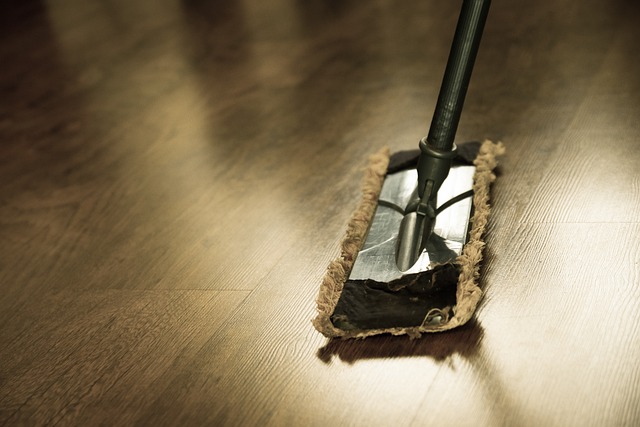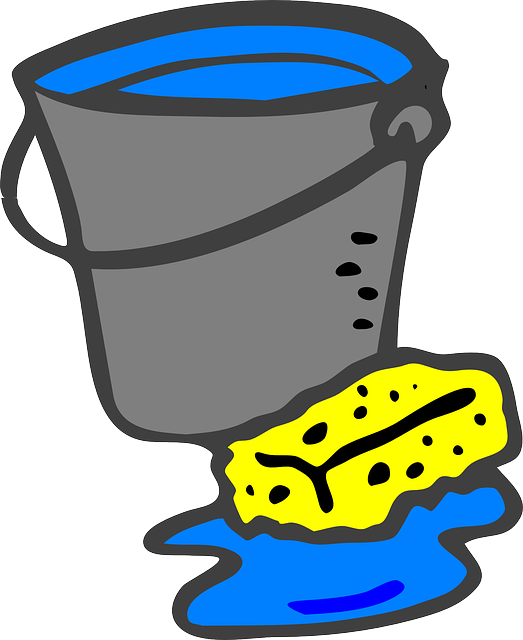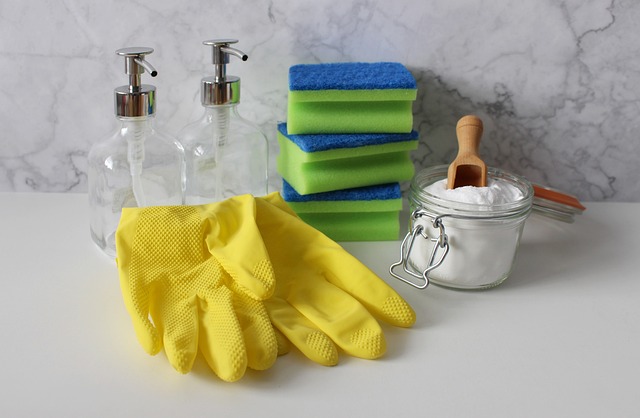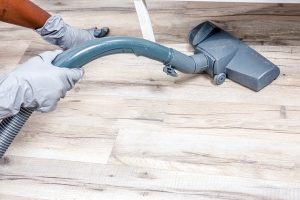Maintaining a clean kitchen floor involves understanding tile and grout materials and addressing challenges like dullness, stains, and mold promptly. Regular mopping with microfiber mops and pH-neutral cleaners or vinegar solutions keeps floors hygienic and prevents debris buildup. Daily brushing of grout lines, consistent maintenance, and using the right tools extend tile and grout life. Steaming offers an eco-friendly deep clean, while professional services provide superior stain removal for busy kitchens. Sealing grout and tiles regularly with high-quality products completes a comprehensive cleaning routine.
Keeping your kitchen floor clean and sparkling is essential for maintaining a hygienic and inviting space. This comprehensive guide delves into the world of grout and tile cleaning, offering valuable insights on effective maintenance practices. From understanding common kitchen tile materials and issues to choosing the right cleaning products and steam cleaning techniques, we cover it all. Learn how regular cleaning prevents staining, mold, and hard water spots, and discover tips for long-lasting results in your kitchen floor cleaning routine.
Understanding Kitchen Tile and Grout: Materials and Common Issues

Kitchen tiles and grout are integral parts of any culinary space, offering both aesthetic appeal and functionality. When it comes to maintenance, understanding the materials and common issues is key for effective kitchen floor cleaning. Tiles themselves can be made from a variety of materials, including ceramic, porcelain, and stone, each with its unique properties. Grout, typically composed of sand and cement, fills the spaces between tiles, providing structural support and sealing joints.
Over time, however, tiles and grout can face several challenges. Dullness and stains often result from improper cleaning or exposure to moisture, mold, and bacteria. Food particles, grease, and other debris can accumulate in the grout lines, leading to unsightly buildup and an unwelcoming kitchen environment. Addressing these issues promptly is essential for maintaining a clean, hygienic, and visually appealing kitchen floor.
The Importance of Regular Cleaning for Hygienic Kitchens

Regular cleaning is paramount in maintaining hygienic kitchen environments, especially when it comes to grout and tile surfaces. Kitchens are often the heart of a home, where families prepare meals and gather, making them high-traffic areas that can quickly accumulate dirt, grease, and bacteria. Proper kitchen floor cleaning involves more than just spotless appearances; it’s a crucial step in preventing the spread of germs and ensuring a safe space for food preparation.
Effective tile and grout cleaning removes not only visible grime but also tackles the microscopic organisms that can thrive in these porous surfaces. Regular maintenance prevents the buildup of mold, mildew, and bacteria, which are uninviting and potentially harmful. By adopting a consistent cleaning routine, homeowners can protect their investments, preserve the aesthetics of their kitchens, and contribute to overall health and well-being within the household.
Effective Methods for Daily Tile and Grout Maintenance

Maintaining clean and sparkling kitchen floors involves a combination of regular cleaning methods and specific care for tiles and grout. Daily tile and grout maintenance should include mopping with a microfiber mop to remove loose dirt and debris, focusing on wet mopping to effectively dislodge stubborn stains. Using a neutral pH cleaner or white vinegar mixed with water is ideal for regular cleaning as these solutions are gentle yet powerful enough to cut through grime without damaging the surface.
Additionally, brushing grout lines with a soft-bristled brush before rinsing can prevent dirt from setting in, ensuring that your kitchen floor remains in pristine condition. Regular maintenance will not only extend the life of your tiles and grout but also make deep cleaning sessions less strenuous. Remember, consistent care is key to preserving the aesthetic and functionality of your kitchen floor.
Choosing the Right Cleaning Products for Optimal Results

When it comes to cleaning kitchen floors, choosing the right products is key for achieving optimal results and maintaining a sparkling space. Grout and tile surfaces require specific cleaners that can effectively tackle dirt, stains, and grime without causing damage. Opting for pH-neutral or slightly acidic cleaners is generally recommended as they are less aggressive and safer for both your health and the integrity of your tiles and grout.
These types of cleaners are particularly effective in cutting through grease, soap scum, and mineral deposits, which are common issues in kitchens. Additionally, using the right tools matters; microfiber mops and cloths are ideal for picking up dirt and moisture without leaving scratches on your tile surfaces. Remember to always follow the manufacturer’s instructions for application and safety precautions when using any cleaning products, especially in high-traffic areas like kitchens where proper hygiene is paramount.
Steaming Clean: Benefits and Techniques for Tile and Grout

Steaming clean is an innovative and effective method for kitchen floor cleaning, especially when it comes to grout and tile. This non-toxic approach uses steam to naturally loosen dirt and grime, making it a popular choice for those seeking eco-friendly solutions. The benefits are numerous; it’s efficient, quick-drying, and leaves no residue or harsh chemicals behind, ensuring a safe environment for your family and pets.
The technique involves directing high-pressure steam onto the tiles and grout, breaking down oil, grease, and baked-on stains. This powerful yet gentle method can reach deep into the crevices, effectively cleaning without damaging the surface. Many modern steam cleaners come equipped with various attachments, allowing for easy navigation around corners and tight spaces in your kitchen.
Deep Cleaning: Removing Stains, Mold, and Hard Water Spots

Deep cleaning involves going beyond routine kitchen floor cleaning to address stubborn stains, mold, and hard water spots that can accumulate over time. This comprehensive process begins with sweeping or vacuuming to remove loose debris and dirt. Next, a quality grout and tile cleaner is applied, allowing it to penetrate and dissolve grime, including the unsightly marks left by mineral deposits from hard water.
For particularly tenacious stains or signs of mold growth, a more aggressive cleaning method may be required. This could involve using specialized tools, such as abrasive pads or scrubbers, along with powerful yet safe cleaning solutions. After treating these areas, thorough rinsing ensures that no residue is left behind, resulting in sparkling, stain-free kitchen floors.
Restoring Shine: Polishing Tiles and Grout for a Fresh Look

After deep cleaning, the next step in revitalizing your kitchen is restoring that shiny, new look to your tiles and grout. The process begins with thoroughly drying the surface area. Once dry, use a high-quality tile cleaner to address any lingering stains or grime, focusing on the grout lines where debris can easily accumulate.
For extra sparkle, employ a polishing compound designed for ceramic and porcelain tiles. Buff the surface with a clean cloth or sponge until the tiles regain their natural luster. This final touch not only enhances the aesthetics of your kitchen floor cleaning efforts but also helps repel dirt and stains, making future maintenance easier.
Tips for Preventing Future Staining and Damage

To prevent future staining and damage in your kitchen floor cleaning routine, start by regularly sealing your grout and tiles. This protective layer will create a barrier between your flooring and potential stains, making it easier to clean and maintain. Use a high-quality sealer designed specifically for kitchens and follow the manufacturer’s instructions for optimal results.
Additionally, be mindful of what you spill and how you clean it up. Promptly wipe up any liquid spills to prevent soaking into the grout lines. Always use a soft cloth or sponge instead of abrasive scrubbers that can scratch or damage the tile surface. Regular mopping with a mild detergent and warm water will help remove dirt and grime before they set, further reducing the risk of staining.
DIY vs Professional Services: When to Hire Help

When it comes to cleaning kitchen floors, especially those with grout and tiles, the decision between DIY methods and professional services is an important one. Many homeowners opt for a DIY approach, as it’s often seen as a cost-effective solution. There are numerous products available in stores that claim to effectively clean tile and grout, making it tempting to tackle the job yourself. However, for deeper cleaning, especially in kitchens with high foot traffic or tough stains, professional services might be the better choice.
Professional cleaners have access to specialized equipment and powerful cleaning solutions designed specifically for grout and tile cleaning. They understand the intricacies of different tile types and know how to avoid damage during the cleaning process. While DIY methods can provide temporary results, professionals offer a more thorough clean, ensuring that your kitchen floor looks fresh and new again. Consider hiring help if you have a busy schedule, want expert advice on choosing the right cleaning products, or simply don’t have the time or expertise for a deep clean.
